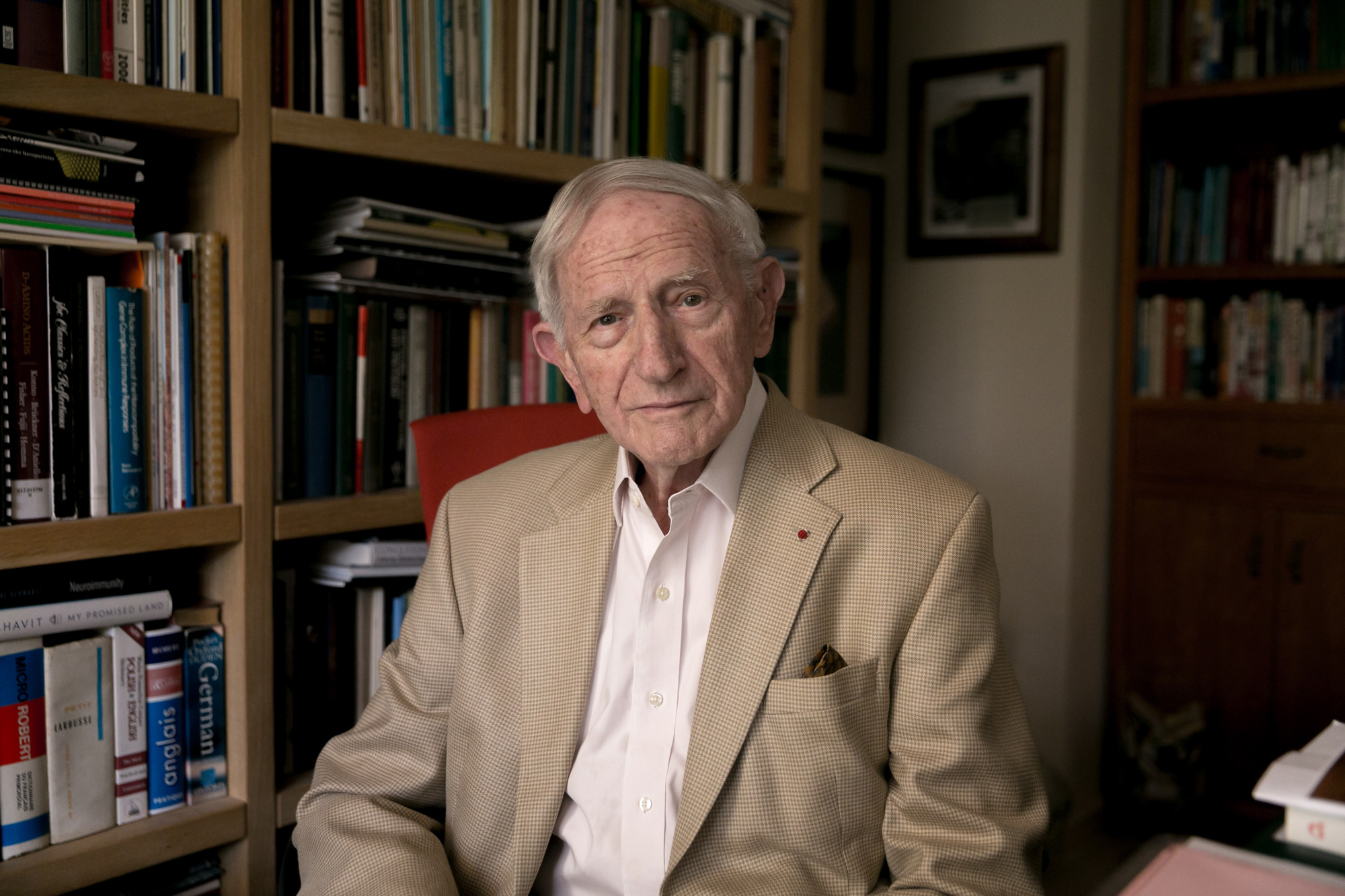
In the late 1960s, as a researcher at the Weizmann Institute of Science, Prof. Sela wanted to shed light on the causes and nature of the potentially disabling disease. He and two colleagues—Ruth Arnon and Dvora Teitelbaum—injected synthetic proteins into lab animals in an attempt to induce something akin to multiple sclerosis as part of that quest.
To their surprise, none of the laboratory animals developed the malady. “We wanted to cause disease, and we were unsuccessful,” Prof. Sela later told TheMarker, an Israeli newspaper.
Eventually, he said, the researchers realized that if the injections didn’t cause the disease, they might be preventing it. After further research, Prof. Sela called a friend, Eli Hurvitz, who was chief executive officer of Teva Pharmaceutical Industries Ltd.
“I have something I want to show you,” Prof. Sela said. Invited to dinner at the home of Mr. Hurvitz, Prof. Sela projected slides depicting progress in developing a drug eventually known as Copaxone.
“I want it,” Mr. Hurvitz said.
In 1996, shepherded by Teva, Copaxone was approved by the U.S. Food and Drug Administration.
“It had a tremendous impact” on treatment of the disease, said Rhonda Voskuhl, director of a multiple-sclerosis program at the University of California, Los Angeles. Though it doesn’t cure MS, it makes relapses less frequent, reducing disability in the long run, she said. “It was the mainstay [of MS treatment] for a very long time” and is still being used.
Newer drugs can have greater effects in delaying relapses but often at the cost of serious side effects, said David Irani, a professor of neurology at the University of Michigan medical school. For that reason, he sometimes still prescribes Copaxone for MS patients.
Prof. Sela also helped create Erbitux and other cancer drugs. He was known for his research on synthetic antigens, molecules that induce an immune response.
From 1975 to 1985, he served as president of the Weizmann Institute in Rehovot, Israel, where he spent seven decades as a researcher, lecturer and administrator.
Mieczysław Salomonowicz, who later changed his name to Michael Sela, was born Feb. 28, 1924, in Tomaszów Mazowiecki, Poland, where his father owned a textile factory. After economic troubles in the 1930s destroyed that business, his father sold textiles door to door, according to a 2013 biography of Mr. Sela by Yossi Goldstein.
In 1935, the elder Mr. Salomonowicz found work at a textile factory in Romania and moved the family there. Young Michael, who already spoke Polish and German, quickly learned Romanian and excelled in school.
Worried about rising anti-Semitism, the Salomonowicz family decided to emigrate to British-controlled Palestine. A bureaucratic snafu with visas delayed his parents’ departure, and so at age 16 Michael set off on his own on a boat across the Black Sea to Turkey and continued by train to Lebanon.
British border agents in Palestine refused to let him in and sent him to a detention camp. His parents arrived a week later and also were detained but eventually persuaded the authorities that they had valid visas. Michael worked in a factory and soon enrolled at Hebrew University, where he studied chemistry and physics.
In November 1947, the United Nations approved a plan to partition Palestine. Though he had never been very political, Michael Sela put off further studies to support the Zionist cause. While traveling in Italy in early 1948, he volunteered to help Holocaust survivors emigrate from Europe to Palestine. After the founding of the state of Israel in May 1948, he served as commercial secretary of the Israeli legation in Czechoslovakia.
In 1950, he returned to Israel and joined the Weizmann Institute, where he worked with Ephraim Katzir, a biophysicist who later was president of Israel. He received his Ph.D. degree in protein chemistry from Hebrew University.
Along with his work at Weizmann, he had temporary postings as a visiting scientist or professor at the U.S. National Institutes of Health, the Massachusetts Institute of Technology, Harvard University and the Pasteur Institute. Among the many awards he won were the Israel Prize and the Wolf Prize.
His first wife, Margalit Liebman Sela, died in 1975. He married Sara Kika in 1976. She survives him, along with three daughters, six grandchildren and four great grandchildren.
